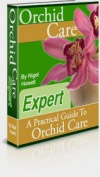There are many orchid supplies you can purchase or make yourself to fulfil a wide range of requirements that your orchids may have. The list can be a little overwhelming if you’re new to growing orchids and can put some off, making it seem overly complicated or expensive to grow orchids, but this is not the case. Below I’ve put together a small list of the more basic orchid supplies you may need and details of why you may or may not need them.
Potting media
If you’re planning on growing your orchids in pots then a good potting media is important, soil or compost will not do the job. Orchids typically require good drainage and airflow around their roots otherwise they will die off and soil will retain too much moisture. A little research into your orchid type will allow you to match it’s requirements to a good potting media.
Common potting mediums include, potting bark such as Pine Bark, New Zealand or Chilean Sphagnum Moss, Red Wood Fibre and Coconut Husk. Ideally you want a potting media or mix that does not easily compact that will consistently allow good drainage and airflow over time but also one that can retain some moisture and nutrients. Organic potting mediums will gradually decay over time compacting, reducing drainage and providing an excellent environment for bacteria and other pests so it’s important to keep an eye on the situation.
Orchid Pots
Once again adequate drainage is an important factor here so your pots should allow plenty of drainage and airflow while still holding your potting media firmly in place. Orchids prefer to be tightly potted compared with many other houseplants so be sure to use the correct size of pot. If your orchids roots are growing out and over the pot it’s time to repot your orchid before the roots get a good grip as this will make it more difficult to repot without damaging them.
Orchids roots are a good indicator of the health of your plant, healthy roots will be firm to the touch, dying roots can be a sign of several problems and will be soft or mushy to the touch. You can purchase clear pots which will give you a good view of your orchids roots and give you a hand spotting any problem that may be occuring.
Orchid Fertilizer
Your orchid will require periodic feeding, a bit of research into your orchid will tell you how much and how frequently this should be done. It’s important to get the correct amount of nutrients and other trace elements for a happy healthy orchid so I recommend you buy specialist orchid fertilizer from a local garden centre.
Stakes
In some cases you may need these to provide support for your orchids stem, stakes are commonly either metal or bamboo. Bamboo may look more natural but metal has the advantage that it can be made into spirals or bent enabling you to wrap it around your orchid without the need for unsightly clips or ties. You can also use your stakes to label your orchids.
Spray Bottles
Orchids thrive in humid environments and a spray bottle will help you provide that for your orchid. Make sure that the spray comes out as a fine mist rather than droplets, water collecting on the orchids leaves can damage them and leave marks that won’t look good and may even cause damage. Pressurised spray bottle work well for this. It’s also worth noting that you should spray only with warm-ish water, if the temperature is too cold your orchid won’t like it, it can weaken the plant and make it more susceptible to problems such as fungal infections.
Orchid mounts
Most orchids are epiphytic which means that can live on other living things such as trees. This is different from parasitic as the do not feed off the nutrients in the tree but simply use it as a surface on which to grow. Mounting your orchid can in a lot of cases produce healthier orchids than growing them in pots.
Your orchid will require a rough or craggy surface on which to grow and you will need to find some way to secure the orchid in place until its roots have a good grip, this can be done with fishing line or string for example and may take around a year before you can remove the tie.
Humidity Trays
Orchids natural environments are typically tropical with fairly high humidity. You can increase the humidity level around your orchid without turning your house into a greenhouse simply and effectively by using a humidity tray.
You can buy various different types of humidity trays or construct your own. Sit your orchid on a tray filled with stones or a suitable grate and fill the tray with warm water nearly to the top. The stones or grating are there to keep your orchids roots out of direct contact with the water. The water will evaporate into the air increasing the humidity around your orchid.

